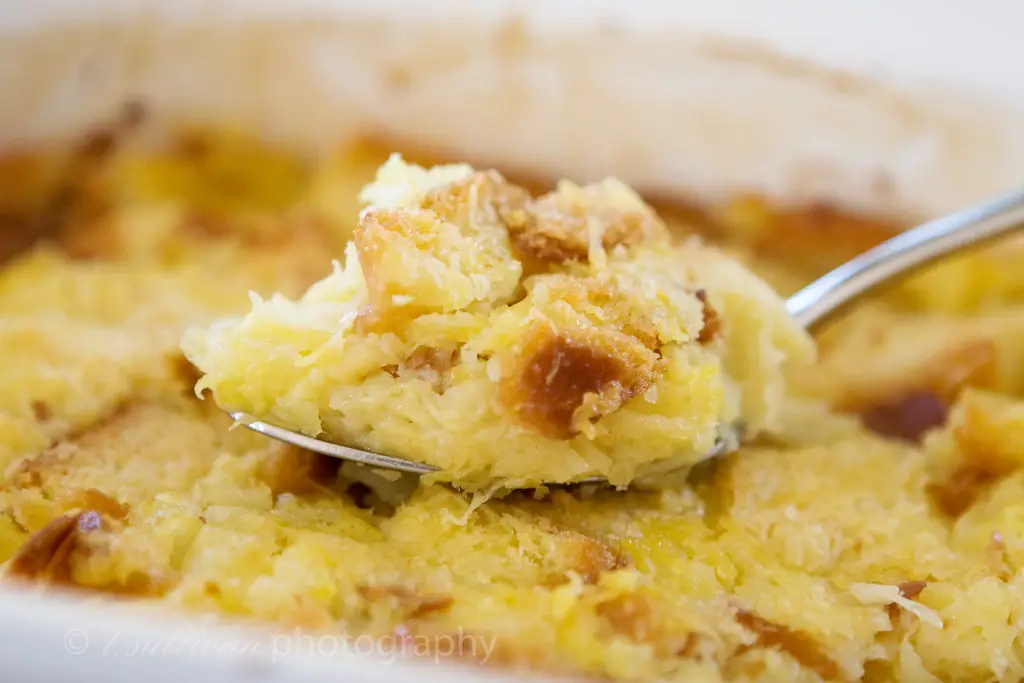Irish soda bread is a traditional, simple bread that requires no yeast and rises with the help of baking soda. It’s a quick and easy recipe that has been cherished in Ireland for generations, often enjoyed with butter, jam, or as part of a hearty meal.
This classic bread is not only delicious but also incredibly easy to make, making it a perfect baking project for beginners or those looking for a quick homemade bread option. Here is an easy recipe for you to try:
Ingredients:
4 cups (500g) all-purpose flour, plus more for dusting
1 teaspoon baking soda (bicarbonate of soda)
1 teaspoon salt
1 3/4 cups (400ml) buttermilk
Optional Ingredients for Variations:
1/2 cup (75g) raisins or dried currants for a sweeter bread
1 tablespoon caraway seeds for a traditional flavor
Instructions:
Preheat the Oven and Prepare the Pan:
Preheat your oven to 425°F (220°C). Dust a baking sheet with a little flour or line it with parchment paper.
Mix Dry Ingredients:
In a large mixing bowl, whisk together the flour, baking soda, and salt. If you’re adding raisins or caraway seeds, mix them into the dry ingredients at this point.
Add Buttermilk:
Make a well in the center of the dry ingredients and pour in the buttermilk. Use a wooden spoon or your hands to mix until a sticky dough forms. Be careful not to over-mix, as it can make the bread tough.
Form the Dough:
Turn the dough out onto a lightly floured surface. Gently knead it just a few times to bring it together into a round loaf. Avoid over-kneading. The dough should be soft and slightly sticky.
Score the Bread:
Place the dough on the prepared baking sheet. Use a sharp knife to cut a deep cross (about an inch deep) across the top. This helps the bread to cook evenly.
Bake:
Bake in the preheated oven for about 30-40 minutes, or until the bread is golden brown and sounds hollow when tapped on the bottom. The exact time will depend on your oven and the size of your loaf.
Cool:
Remove the bread from the oven and let it cool on a wire rack for at least 10 minutes before slicing. This allows the steam to escape and the bread to firm up, making it easier to slice.
Serving Suggestions:
Irish soda bread can be enjoyed warm or at room temperature. It pairs wonderfully with butter, cheese, smoked salmon, or simply on its own. It’s best eaten on the day it’s made but can be kept for a couple of days and toasted to refresh.
Tips for Perfect Irish Soda Bread:
Do Not Overwork the Dough: The key to tender soda bread is minimal handling. Overworking the dough activates the gluten, making the bread tough.
Buttermilk Substitute: If you don’t have buttermilk, you can make a quick substitute by mixing 1 tablespoon of lemon juice or white vinegar with enough milk to make 1 cup. Let it sit for 5 minutes before using.
Adjust the Flour as Needed: Depending on the humidity and how you measure flour, you might need to adjust the amount of buttermilk a bit. If the dough is too dry, add a little more buttermilk. If it’s too sticky, add a bit more flour.
This easy Irish soda bread recipe brings a taste of Ireland into your home with minimal effort and ingredients. Whether you’re celebrating St. Patrick’s Day or simply craving a quick homemade bread, this recipe is sure to satisfy.
Variations of Irish Soda Bread:
While the basic recipe for Irish soda bread is simple and delicious, there are several variations that you can try to suit your taste or make the bread a bit more special:
Brown Soda Bread: Substitute half of the all-purpose flour with whole wheat flour for a denser, nuttier flavor. This version is particularly good with soups and stews.
Sweet Soda Bread: Add about 1/4 cup of sugar and 1/2 cup of dried fruit like raisins, sultanas, or dried cranberries to the dough for a sweeter, dessert-like bread.
Seeded Soda Bread: Stir in a mixture of seeds such as sunflower seeds, pumpkin seeds, and sesame seeds into the dough for added texture and a nutritional boost.
Herb Soda Bread: Add 1 to 2 tablespoons of freshly chopped herbs like rosemary, thyme, or chives for a flavorful twist.
The Cultural Significance of Irish Soda Bread:
Irish soda bread holds a special place in the hearts of those who cherish Irish culinary traditions. Originally, this bread was developed out of necessity, as it required only the most basic of ingredients: flour, baking soda, salt, and sour milk (buttermilk). These ingredients were staples in the Irish rural household, making soda bread an accessible option for families to enjoy fresh bread daily.
The cross cut into the top of the loaf before baking has both practical and cultural significance.
Practically, it allows heat to penetrate the center of the dough, ensuring it cooks evenly.
Culturally, it’s often seen as a symbol of protection or blessing for the bread and the household.
Storing and Freezing Irish Soda Bread:
Storing: If you have leftovers, wrap the cooled bread in a clean kitchen towel and store it in an airtight container for up to 2 days. For a longer shelf life, you can also wrap it in plastic wrap and then aluminum foil.
Freezing: Irish soda bread freezes well. Wrap the cooled loaf or individual slices in plastic wrap, then place them in a freezer bag. Freeze for up to 3 months. Thaw at room temperature or in the oven wrapped in aluminum foil at 350°F (175°C) until warmed through.
Irish soda bread is more than just a quick and easy recipe; it’s a beloved tradition that connects us to the simplicity and warmth of Irish kitchens. Whether you stick to the traditional recipe or experiment with variations, making soda bread is a comforting and satisfying experience.
Serve it as part of your next meal, and enjoy the hearty, homey goodness that comes with each slice.
Frequently Asked Questions (FAQs) about Irish Soda Bread
Can I use regular milk instead of buttermilk in soda bread?
Yes, you can use regular milk, but you’ll need to acidify it to mimic the effects of buttermilk. Add 1 tablespoon of lemon juice or white vinegar to a cup of milk and let it sit for 5 minutes before using. This process helps to activate the baking soda, which is crucial for the bread to rise.
Why did my soda bread turn out too dense or heavy?
There are a few reasons why soda bread might turn out dense:
Overworking the Dough: The most common reason is over-kneading. Mix the dough until it just comes together; it should still be a bit rough.
Expired Baking Soda: Ensure your baking soda is fresh since it loses potency over time.
Incorrect Oven Temperature: If the oven isn’t hot enough, the bread won’t rise properly before the crust forms, leading to denseness.
Can I add yeast to my soda bread for extra rise?
Traditional Irish soda bread doesn’t include yeast, relying instead on the reaction between baking soda and buttermilk for leavening. Adding yeast would turn it into a different type of bread altogether. If you’re looking for a lighter, more airy texture, ensure your baking soda is fresh and that you’re not overworking the dough.
How do I know when my soda bread is fully baked?
Soda bread typically takes about 30-40 minutes to bake fully, but ovens can vary. A good test is to tap the bottom of the loaf – it should sound hollow when it’s done. Another method is to insert a toothpick or a knife into the center; it should come out clean. Additionally, the internal temperature should reach around 190°F (88°C) when measured with a food thermometer.
Can soda bread be made vegan?
Yes, you can make vegan Irish soda bread. Substitute the buttermilk with a vegan version made by adding 1 tablespoon of lemon juice or apple cider vinegar to a cup of plant-based milk (like almond or soy milk). Also, ensure that the rest of your ingredients are suitable for a vegan diet.
Why is my soda bread crust too hard?
A hard crust can result from baking the bread too long or at too high a temperature. Soda bread should have a rustic, crusty exterior, but if it’s too hard, try reducing the oven temperature slightly and check the bread earlier. Additionally, wrapping the warm bread in a clean kitchen towel as it cools can help soften the crust.
Can I make soda bread in a loaf pan?
While traditional Irish soda bread is usually baked as a free-form round loaf, you can certainly use a loaf pan for a more uniform shape. Just be sure to adjust the baking time as needed, since the dough might take longer to cook through in a loaf pan.
Is it possible to overmix soda bread dough?
Yes, overmixing the dough is one of the common pitfalls when making soda bread. Mix the ingredients until just combined; the dough should be rough and sticky. Overmixing will develop the gluten in the flour, making the bread tough and dense.
By understanding these common questions and pitfalls, you can improve your soda bread baking skills and enjoy this delicious, traditional Irish bread with confidence.


















